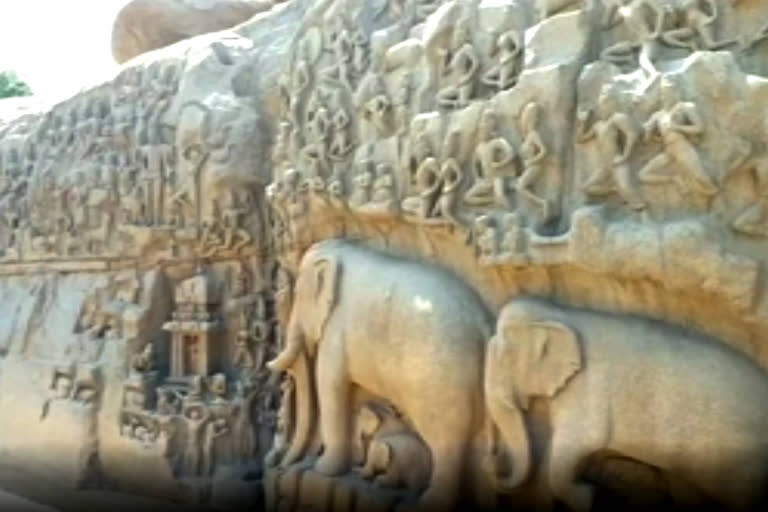Chennai: Perhaps when Hiuen Tsang visited the port-town of Mamallapuram in Tamil Nadu, 13 centuries ago, he could have clearly perceived the common cultural thread of Buddhism between his motherland of China and Tamil Nadu.
The very purpose of the Chinese scholar’s visit to Kanchipuram, an entre of Buddhist learning was to learn about Buddhist religion, which was born in the Indian sub-continent and spread to China to become the dominant religion of the dragon nation.
When Chinese President Xi Jinping will visit the same port on October 11, he will find a fusion of Buddhist practice and Hindu mythology in the sculpture at the coastal town.
Several meditative postures of Buddhist saints and carvings depicting some of the Buddhist teachings are also found in the sculptures along with the sculptures depicting the Indian mythological postures of Lord Krishna, the chariots of five Pandavas and the Arjun Penance.
The cultural traces of both China and India could be found in the same place establishing a clear cultural connection between the Asian neighbours sharing an ancient culture and tradition.
A fusion of both worlds is seen at Mamallapuram since the carvings were made when Tamil Nadu itself was undergoing a transformation from a distinct and unique culture of the Sangam classical age to a newly blended culture due to the advent of ideas and influence of the northern region of the sub-continent.
Tamil Nadu was one of the places where Buddhism flourished in the first century AD and many of the classical Sangam age poets including Ilango, who authored the major Tamil epic Silappadhigaram were Buddhists. The Pallava regime is a time when the renaissance of Saivaite and Vaishnavite faiths took place in Tamil Nadu and the marvellous sculpture at Mamallapuram town is a reflection of their times. However, the Dravidian and Tamil nationalist ideologists term the change as a cultural invasion of the north over Tamil Nadu.
For Prime Minister Modi, the port town portrays the cultural links between India and China. Besides, the carvings of characters from the epic Mahabharath at the ancient coastal town in the Dravidian heartland would also suggest that Indian culture from north to south is the same for many centuries.
However, Tamils have a connection with China even before the seventh century and the relationship dates back to the second century BC. According to ancient Chinese scholar Ban Gu, the dragon nation sent an ambassador to the court of Cholas, who ruled Tamil Nadu at that time. He also mentions seeing a Chola city of 'Kuvangtche' and experts say that it is analogous to Kanchi.
The medieval Chola kings like Rajendra Chola. Chinese coins are also found in Thanjavur, Tiruvarur, Nagapattinam and Pudukottai districts ruled by the Chola kings. The ancient Tamil work "Pattinapalai," speaks about the anchorage of a Chinese ship on the eastern coast of ancient Tamil Nadu. The work refers to a ship "tungu naavay," which experts say is a big Chinese vessel.
Read also: Here is the itinerary of PM Modi, Xi's informal summit



